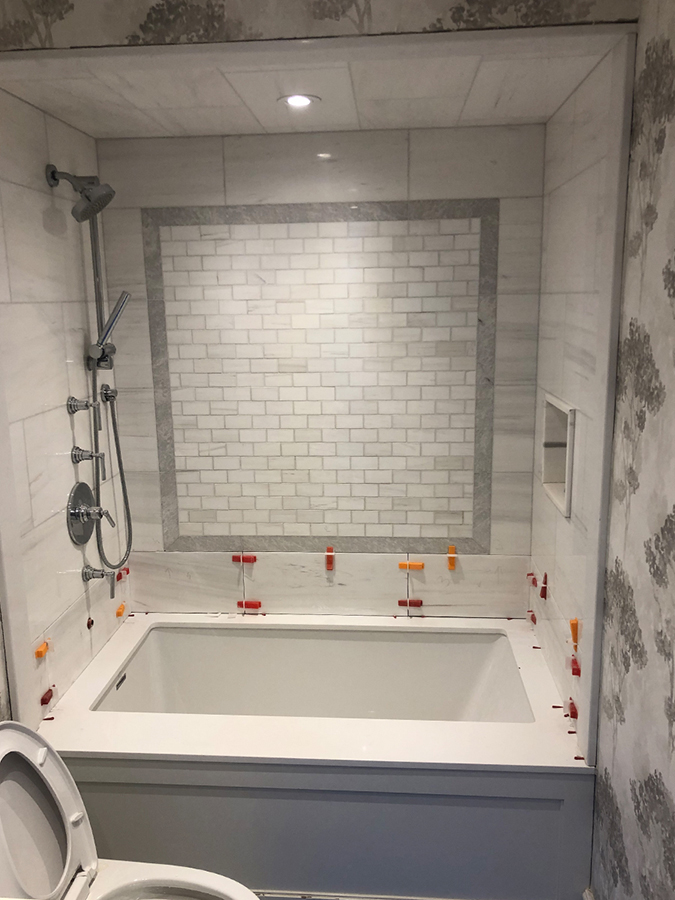Moisture and mold are common problems in many Toronto homes, especially in older buildings where outdated ventilation systems and plumbing can lead to dampness. Due to the city’s humid summers and cold winters, bathrooms are often a prime area for moisture accumulation, which can eventually lead to mold growth. Renovating your bathroom provides an excellent opportunity to address these issues and ensure your space stays mold-free for years to come.
Here’s how you can prevent and eliminate moisture and mold in your bathroom during a renovation.
- Proper Ventilation: The Key to Preventing Moisture Buildup
One of the most effective ways to prevent moisture buildup is by installing proper ventilation. In many older Toronto homes, the ventilation system may be insufficient or outdated, allowing humidity to linger in the bathroom after showers or baths.
When renovating your bathroom, it’s essential to install an exhaust fan that can handle the room’s size and moisture levels. Ideally, the fan should vent directly outside and be rated to handle the square footage of your bathroom. An exhaust fan with a built-in humidity sensor is a great option, as it automatically turns on when moisture levels rise, ensuring consistent air circulation. This simple step can drastically reduce moisture and prevent mold from forming.
- Choosing the Right Materials: Mold-Resistant Options
The materials you choose during your renovation can play a major role in preventing moisture retention and mold growth. Some building materials, like drywall, are more susceptible to mold, while others are designed specifically to resist moisture.
Mold-resistant drywall: Using mold-resistant or greenboard drywall in areas exposed to high humidity can help reduce the likelihood of mold.
Moisture-resistant paints: Choosing water-resistant paints for your walls and ceilings provides an additional layer of protection against moisture. Some paints also contain antimicrobial agents that can help prevent mold.
Tiles and grout: Porcelain or ceramic tiles are excellent choices for bathroom floors and walls, as they resist water absorption. Be sure to use a high-quality, mold-resistant grout to seal the joints between tiles.
- Waterproofing: Essential for Long-Lasting Protection
Waterproofing is a critical step during any bathroom renovation to ensure that moisture doesn’t seep into the walls, floors, or behind fixtures where it can lead to mold growth.
Waterproof membranes: Installing a waterproof membrane behind shower walls, under tile floors, and around bathtubs can prevent water from penetrating deeper layers of your bathroom. These membranes act as a barrier, keeping moisture away from areas where mold could thrive.
Sealing corners and edges: Pay special attention to corners, edges, and seams in your bathroom. These areas are more prone to water accumulation and should be carefully sealed with waterproof caulking to prevent leaks and moisture buildup.
- Plumbing Updates: Stop Leaks Before They Start
Leaky pipes or poor plumbing can contribute to long-term moisture issues. During your bathroom renovation, it’s the perfect time to inspect and update old plumbing systems. Replacing aging pipes or fixing slow leaks behind walls and under floors will prevent water damage and reduce the risk of mold.
Consider upgrading to more efficient plumbing fixtures, like low-flow faucets and showerheads, which not only save water but also minimize excess moisture.
- Dealing with Existing Mold: Elimination Before Renovation
If your bathroom already has mold, it’s crucial to eliminate it before starting any renovation work. Mold spores can spread quickly, so addressing the root cause is important. Professional mold remediation may be necessary in severe cases, but smaller outbreaks can often be handled with mold-killing cleaning solutions and scrubbing.
Once the mold is gone, it’s essential to ensure that the renovated bathroom is designed to prevent future growth by addressing the causes of moisture buildup.
Conclusion
Renovating your bathroom in Toronto is a great opportunity to tackle moisture and mold issues that are common due to the local climate. By focusing on proper ventilation, choosing mold-resistant materials, waterproofing surfaces, and updating plumbing, you can ensure that your new bathroom remains mold-free and healthy for years to come. Whether you live in a condo or a century-old home, taking these precautions will protect your investment and improve the quality of your bathroom environment.
Ready to renovate your bathroom and say goodbye to mold? Contact us at tilecontract@gmail.com and (647) 819-7718 for expert advice and a mold-free renovation that lasts!

Leave a Reply